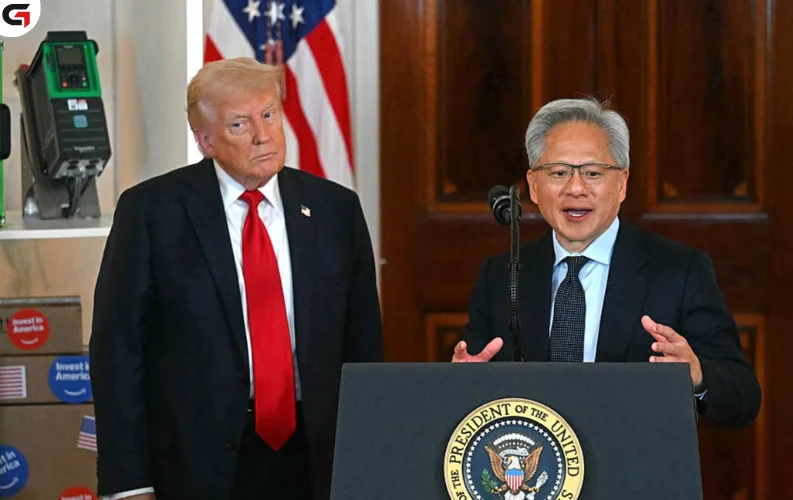From Riyadh to Muscat, from the glimmering cafés of Doha to the 24-hour delivery options of Dubai, food has become more than sustenance, it’s become culture, convenience, and comfort. But beneath the surface of this fast-paced, modern lifestyle lies a deepening crisis. The Gulf Cooperation Council (GCC) countries are facing a public health emergency fueled by poor dietary habits, increasing reliance on fast food, and rising cases of chronic illnesses like diabetes and obesity.
For decades, the rapid urbanization and affluence of Gulf states have transformed how people eat, live, and move. But these shifts have also created a dangerous imbalance between tradition and modernity, where nutritional wisdom rooted in heritage has been replaced by processed, calorie-dense convenience.
This article offers a comprehensive look at how food habits in the Gulf are shaping health outcomes and outlines actionable solutions that can turn this crisis into an opportunity for regional wellness.
Part 1: Fast Food and the Gulf’s Changing Dietary Landscape
In the last two decades, fast food has not only become accessible, it has become dominant. With multinational chains on every corner and delivery apps making processed food available 24/7, fast food consumption in the Gulf is among the highest in the world per capita.
Factors Driving the Surge:
-
Time-Pressed Urban Living: With long work hours and traffic congestion, home-cooked meals are often replaced by quick takeouts.
-
Cultural Shifts in Eating Habits: Younger generations prefer casual dining and socializing around fast food over traditional family meals.
-
Marketing Power: Aggressive advertising, often targeting children and youth, promotes unhealthy foods as trendy, fun, and aspirational.
-
Lack of Regulation: Until recently, calorie labeling, sugar taxes, and portion control guidelines were limited or non-existent.
This culture of convenience has led to excessive caloric intake, poor micronutrient consumption, and overreliance on refined carbohydrates and saturated fats.
Also Read:- The Ultimate Guide to the 9 Best Diet Plans for Overall Health
Part 2: Diabetes, The Chronic Illness That’s Becoming the Norm
Type 2 diabetes has emerged as one of the most critical public health challenges in the Gulf. Fueled largely by diet and lifestyle, this condition affects not just individuals but the economy, productivity, and healthcare systems.
The Numbers Tell the Story:
-
Saudi Arabia: Over 7 million people live with diabetes; an additional 3 million are prediabetic.
-
United Arab Emirates: Nearly 1 in 6 adults is diabetic.
-
Qatar and Kuwait: Among the world’s highest diabetes rates, exceeding 20% in some demographic groups.
Early-onset diabetes among adolescents and young adults is now becoming more common, with complications including vision loss, kidney disease, and heart problems appearing earlier in life than ever before.
Part 3: Obesity and Childhood Malnutrition in a Land of Plenty
Obesity is often viewed as the opposite of malnutrition, but in the Gulf, they coexist. Over-nutrition (too many calories, too few nutrients) has become the new form of malnutrition in urban families.
Key Observations:
-
Adult Obesity: Over 70% of adults in Kuwait and over 60% in the UAE are overweight or obese.
-
Childhood Obesity: One in three school-aged children across the GCC is overweight or obese, with growing trends of early-onset Type 2 diabetes.
-
Women and Obesity: Cultural restrictions on movement and fitness for women have historically contributed to higher obesity rates in female populations, though this trend is shifting.
The lack of mandatory school nutrition standards, easy access to sugary snacks, and limited public health education further compound the issue.
Part 4: The Role of Culture, Climate, and Convenience
To understand the Gulf’s nutritional crisis, one must also examine lifestyle and environment. Culture and climate have significant influence on physical activity and eating behaviors.
Lifestyle Factors:
-
Extreme Weather: High temperatures often discourage outdoor activity for much of the year, reducing opportunities for exercise.
-
Car-Dependent Cities: Public transportation remains limited in many areas, and cities are designed around vehicles rather than walkability.
-
Social Gatherings: Celebrations, meetings, and majlis settings are often food-centric, with sweets, heavy rice dishes, and sweetened teas served in abundance.
-
Religious Fasting and Feasting Cycles: During Ramadan and Eid, dietary discipline often gives way to high-calorie meals and sweets.
While rooted in hospitality and tradition, these practices require modern health-conscious adaptations to prevent disease and promote balance.
Part 5: Government Responses and Policy Interventions
Recognizing the scale of the problem, governments across the Gulf are introducing health policies and public education campaigns aimed at reversing the damage.
Key Initiatives:
-
UAE:
-
Launched “Healthy UAE 2030” to reduce obesity, diabetes, and heart disease.
-
Enforced sugar taxes on soft drinks and energy drinks.
-
Promotes calorie labeling in restaurants.
-
-
Saudi Arabia:
-
Implemented “Healthy Food Strategy” under Vision 2030.
-
Banned trans fats in food production.
-
Introduced physical education for girls in public schools for the first time.
-
-
Qatar:
-
Active implementation of the National Nutrition and Physical Activity Plan.
-
Focus on maternal and child health awareness.
-
-
Bahrain & Oman:
-
Partnered with WHO to conduct national food consumption surveys.
-
Encouraging wellness-based workplace policies.
-
Still, implementation gaps, limited enforcement, and cultural resistance hinder long-term behavior change.
Explore More:- Meal Planning Made Simple: Healthy Eating for Beginners
Part 6: Health Movements Taking Root in the Gulf
Despite the crisis, the Gulf is also home to a rising wave of health-conscious movements, especially among millennials and Gen Z.
Encouraging Trends:
-
Fitness Influencers and Nutritionists: Social media is being used to educate the public on healthy recipes, workouts, and portion control.
-
Farmers' Markets and Organic Shops: A return to traditional foods like dates, lentils, and grilled fish is gaining popularity.
-
Digital Health Tools: Nutrition tracking apps, virtual diet consultations, and smart scales are becoming common in households.
-
Workplace Wellness Programs: Corporate sectors are investing in gym memberships, health seminars, and sugar-free zones.
These movements are starting to shift public awareness, but sustained change requires support from schools, governments, families, and religious institutions.
Part 7: The Way Forward, A Multi-Layered Strategy for Better Nutrition
There’s no single solution to the Gulf’s nutrition crisis, but coordinated efforts can create lasting change.
Key Recommendations:
-
Mandatory School Nutrition Programs:
Introduce regulated, balanced meal plans and healthy canteen menus. -
National Nutrition Education Campaigns:
Use media to promote label reading, portion control, and smart grocery shopping. -
Urban Planning for Walkability:
Create shaded paths, indoor parks, and community fitness hubs. -
Support for Local Agriculture:
Invest in growing fresh produce locally to reduce dependency on imports. -
Religious and Cultural Alignment:
Work with imams, community leaders, and educators to embed health messages in Friday sermons, TV shows, and Ramadan programming.
Conclusion: Nourishing the Gulf, One Plate, One Choice at a Time
The nutrition crisis in the Gulf is not the result of ignorance or indifference, it’s the byproduct of rapid development, modern pressures, and shifting lifestyles. But with awareness, innovation, and commitment, the region can reverse this trend.
Healthier eating is not just about preventing disease, it’s about protecting culture, ensuring productivity, and empowering future generations to thrive. The Gulf’s strength lies in its ability to adapt, and its health systems must now do the same, blending tradition with science, and convenience with consciousness.
You may also like:-






















